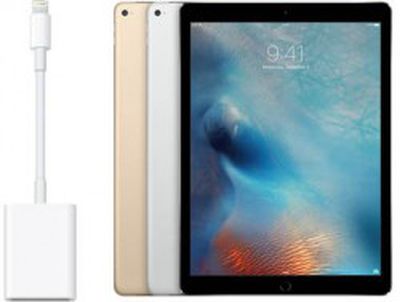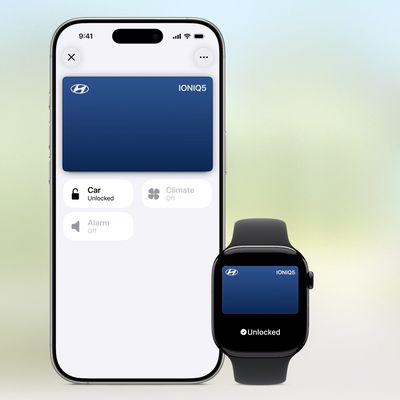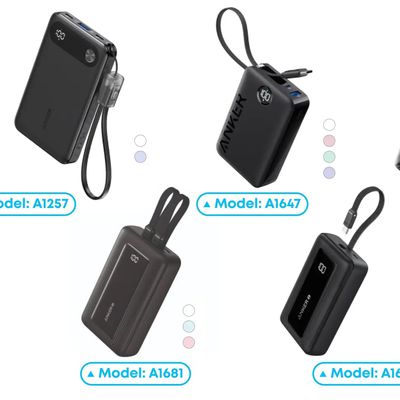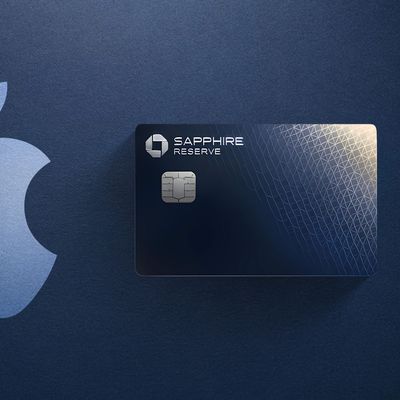Apple Releases Lightning to SD Camera Reader With USB 3.0 Speeds on iPad Pro
 Apple has released a new Lightning to SD Card Camera Reader with support for up to USB 3.0 speeds on iPad Pro, and USB 2.0 speeds on all other iPad and iPhone models, as spotted by iDownloadBlog. The dongle retails for $29 on the Apple Online Store in the U.S. and is available to ship for delivery within approximately one week.
Apple has released a new Lightning to SD Card Camera Reader with support for up to USB 3.0 speeds on iPad Pro, and USB 2.0 speeds on all other iPad and iPhone models, as spotted by iDownloadBlog. The dongle retails for $29 on the Apple Online Store in the U.S. and is available to ship for delivery within approximately one week.
Last month, it was discovered that the iPad Pro's Lightning port supports USB 3.0 transfer speeds, allowing for data transfer speeds upwards of 60MB/s to a theoretical max of 625MB/s. All other iPads and iPhones can only transfer data at USB 2.0 speeds of around 25 to 35MB/s, since only the iPad Pro has the necessary hardware -- a Fresco Logic FL1100 4-port USB 3.0 Host Controller.
Apple has not updated its Lightning to USB Camera Adapter or other accessories to support the iPad Pro's USB 3.0 speeds, but multiple sources have previously confirmed that adapters are in the works. It remains unclear, however, if Apple plans on introducing new Lightning cables that will enable USB 3.0 speeds when transferring files from a computer to an iPad Pro.
Apple's new Lightning to SD Card Camera Reader is also available for £25 in the U.K. and $35 in Canada. Prices vary in other countries.
Popular Stories
Apple hasn't updated the AirPods Pro since 2022, and the earbuds are due for a refresh. We're counting on a new model this year, and we've seen several hints of new AirPods tucked away in Apple's code. Rumors suggest that Apple has some exciting new features planned that will make it worthwhile to upgrade to the latest model.
Subscribe to the MacRumors YouTube channel for more videos.
Heal...
In 2020, Apple added a digital car key feature to its Wallet app, allowing users to lock, unlock, and start a compatible vehicle with an iPhone or Apple Watch. The feature is currently offered by select automakers, including Audi, BMW, Hyundai, Kia, Genesis, Mercedes-Benz, Volvo, and a handful of others, and it is set to expand further.
During its WWDC 2025 keynote, Apple said that 13...
Popular accessory maker Anker this month launched two separate recalls for its power banks, some of which may be a fire risk.
The first recall affects Anker PowerCore 10000 Power Banks sold between June 1, 2016 and December 31, 2022 in the United States. Anker says that these power banks have a "potential issue" with the battery inside, which can lead to overheating, melting of plastic...
Chase this week announced a series of new perks for its premium Sapphire Reserve credit card, and one of them is for a pair of Apple services.
Specifically, the credit card now offers complimentary annual subscriptions to Apple TV+ and Apple Music, a value of up to $250 per year.
If you are already paying for Apple TV+ and/or Apple Music directly through Apple, those subscriptions will...
Apple's next-generation iPhone 17 Pro and iPhone 17 Pro Max are around three months away, and there are plenty of rumors about the devices.
Apple is expected to launch the iPhone 17, iPhone 17 Air, iPhone 17 Pro, and iPhone 17 Pro Max in September this year.
Below, we recap key changes rumored for the iPhone 17 Pro models:Aluminum frame: iPhone 17 Pro models are rumored to have an...
Apple is developing a MacBook with the A18 Pro chip, according to findings in backend code uncovered by MacRumors.
Earlier today, Apple analyst Ming-Chi Kuo reported that Apple is planning to launch a low-cost MacBook powered by an iPhone chip. The machine is expected to feature a 13-inch display, the A18 Pro chip, and color options that include silver, blue, pink, and yellow.
MacRumors...
Apple is planning to launch a low-cost MacBook powered by an iPhone chip, according to Apple analyst Ming-Chi Kuo.
In an article published on X, Kuo explained that the device will feature a 13-inch display and the A18 Pro chip, making it the first Mac powered by an iPhone chip. The A18 Pro chip debuted in the iPhone 16 Pro last year. To date, all Apple silicon Macs have contained M-series...
Apple last month announced the launch of CarPlay Ultra, the long-awaited next-generation version of its CarPlay software system for vehicles.
There was news this week about which automakers will and won't offer CarPlay Ultra, and we have provided an updated list below.
CarPlay Ultra is currently limited to newer Aston Martin vehicles in the U.S. and Canada. Fortunately, if you cannot...
Apple will finally deliver the Apple Watch Ultra 3 sometime this year, according to analyst Jeff Pu of GF Securities Hong Kong (via @jukanlosreve).
The analyst expects both the Apple Watch Series 11 and Apple Watch Ultra 3 to arrive this year (likely alongside the new iPhone 17 lineup, if previous launches are anything to go by), according to his latest product roadmap shared with...
 Apple has released a new Lightning to SD Card Camera Reader with support for up to USB 3.0 speeds on iPad Pro, and USB 2.0 speeds on all other iPad and iPhone models, as spotted by iDownloadBlog. The dongle retails for $29 on the Apple Online Store in the U.S. and is available to ship for delivery within approximately one week.
Apple has released a new Lightning to SD Card Camera Reader with support for up to USB 3.0 speeds on iPad Pro, and USB 2.0 speeds on all other iPad and iPhone models, as spotted by iDownloadBlog. The dongle retails for $29 on the Apple Online Store in the U.S. and is available to ship for delivery within approximately one week.





















